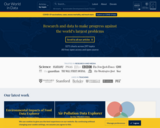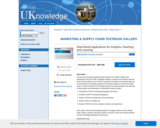
This is an open-source and open access book on how to do Data Science using Julia. The book describes the basics of the Julia programming language DataFrames.jl for data manipulation and Makie.jl for data visualization.
You will learn to:
- Read CSV and Excel data into Julia
- Process data in Julia, that is, learn how to answer data questions
- Filter and subset data
- Handle missing data
- Join multiple data sources together
- Group and summarize data
- Export data out of Julia to CSV and Excel files
- Plot data with different Makie.jl backends
- Save visualizations in several formats such as PNG or PDF
- Use different plotting functions to make diverse data visualizations
- Customize visualizations with attributes
- Use and create new plotting themes
- Add LaTeX elements to plots
- Manipulate color and palettes
- Create complex figure layouts
- Subject:
- Applied Science
- Computer Science
- Information Science
- Mathematics
- Measurement and Data
- Material Type:
- Textbook
- Author:
- Jose Storopoli
- Lazaro Alonso
- Rik Huijzer
- Date Added:
- 11/10/2021






